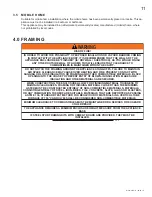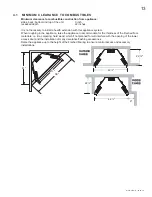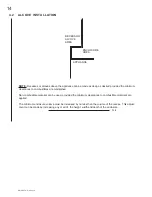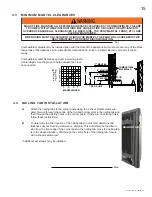
9
W415-0379 / E / 04.24.12
19.3
EXAMPLE 2:
If in this example a solid door separates Room 1 from Room 2, the volume of Room 2 could not be used. In
this case the maximum BTU/h would be:
Maximum BTU/h: 800x1000 = 16,000 BTU/h
50
19.1B
Room Volume = Length x Width x Height
Max BTU/hr = Room Volume x 1000 / 50
LENGTH
HEIGHT
ROOM 2
ROOM 1
WIDTH
If for example:
The length of the rooms is 10 feet,
The width of Room 1 is 10 feet,
The width of Room 2 is 15 feet,
The height of the rooms is 8 feet.
The volume of Room 1: 10x10x8 = 800 cubic feet
The volume of Room 2: 10x15x8 = 1200 cubic feet
19.2
EXAMPLE 1:
In this example, because there is no door to the adjoining room, the volume of the adjoining room may be
added to the volume of the room with the heater to get a total unconfi ned space.
The total unconfi ned space: 800 + 1200 = 2000 cubic feet.
Maximum BTU/h: 2000x1000 = 40,000 BTU/h
50
If there are no more fuel burning appliances within this space then the 30,000 BTU/h input of the appliance is
suitable to be installed. This also assumes that the construction of this space is not unusually tight.
This would be considered a confi ned space since it can not support the 30,000 BTU/h input of the appliance
and it would be necessary to provide adequate combustion and ventilation air to Room 1.










































